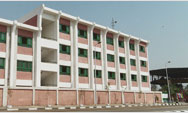 |
|
 |
 |
 |
 Introduction Introduction
Home
- List of Acronyms
- List of Cooperating Sponsors
- Conversion Tables
Part One
Section I:
Commodities
- Commodity Availability
- Commodity Characteristics
- References
Section II:
Food Commodity
Fact Sheets
- Beans, Black
- Beans, Great Northern
- Beans, Kidney (Light Red, Dark Red, All types)
- Beans, Navy (Pea Beans)
- Beans, Pink
- Beans, Pinto
- Beans, Small Red
- Bulgur (BW)
- Bulgur, Soy Fortified (SFBW)
- Corn (bagged, bulk)
- Cornmeal
- Cornmeal, Soy-Fortified (CMSF)
- Corn Soy Blend (CSB)
- Corn Soy Milk (CSM)
- Corn Soy Milk, Instant (ICSM)
- Lentils
- Non Fat Dry Milk (NFDM)
- Peas
- Rice
- Rice (Parboiled)
- Sorghum
- Sorghum Grits, Soy-Fortified (SFSG)
- Fortified Refined Vegetable Oil
- Wheat
- Wheat Flour
- Wheat Soy Blend (WSB)
- Wheat Soy Milk (WSM)
Section III:
Storage/Shelflife
Specifications
- Storage Specifications
- Storage Inspection Checklist
- Shelf Life of Agricultural Commodities
- References
Section IV:
Controlling
Damage to Food
Commodities
- Cleaning and Inspecting
- Insect Control
- Rodent Control
- Reference Chart for Controlling Damage to Food Commodities
- References
 Part Two Part Two
 An Overview An Overview
 Part Three Part Three
|
|
 |
 |
|
Section II: Food Commodity Fact Sheets |
 |
Updated January 2006
Wheat
This unprocessed whole grain is used
primarily for
distribution in emergency situations and in Food for Work programs, and
to a lesser extent in other feeding programs. It is widely used as a
commodity for monetization programs. Please note that wheat is normally
processed in-country into flour. The nutritional values listed below
for wheat may change significantly when wheat is processed, and these
changes will vary with mode of milling and processing.
1. Nutritional Values
(per
100 g)
These are average values, taken from the U.S. Department of
Agriculture, Agricultural Research Service (USDA:ARS) 1998 USDA
Nutrient Database, Release 12, Laboratory Home Page (http://www.nal.usda.gov/fnic/foodcomp).
They are provided as a guideline and are appropriate for use in the
calculation of food aid rations. Please note: these values may or may
not meet the exact specifications of the USDA Export Purchase
Announcements for the P.L. 480 Program, which change periodically.
| Nutrient |
Amount |
Unit |
| Water |
11.8 |
g |
| Energy |
333.5 |
Kcal |
| Protein |
11.7 |
g |
| Total Lipid |
1.8 |
g |
| Carbohydrate |
73.3 |
g |
| Fiber, total dietary |
12.45 |
g |
| Ash |
1.6 |
g |
| Calcium |
32 |
mg |
| Iron |
4.28 |
mg |
| Magnesium |
108 |
mg |
| Phosphorus |
345 |
mg |
| Potassium |
399 |
mg |
| Sodium |
2 |
mg |
| Zinc |
3.1 |
mg |
| Copper |
0.4 |
mg |
| Manganese |
3.7 |
mg |
| Selenium |
35 |
mcg |
| Vitamin C |
0 |
mg |
| Thiamin |
0.4 |
mg |
| Riboflavin |
0.11 |
mg |
| Niacin |
5.12 |
mg |
| Pantothenic acid |
0.9 |
mg |
| Vitamin B-6 |
0.3 |
mg |
| Folate |
39 |
mcg |
| Vitamin B-12 |
0 |
mcg |
| Vitamin A |
0 |
IU |
| Vitamin E |
1.4 |
mg-ATE |
| Vitamin D |
n/a |
IU |
| Iodine |
n/a |
mcg |
| Pyridoxine HCL |
n/a |
mg |
2. Components: (per
100 g
Lentils)
100% Wheat.
3. Specifications:
Class: Durum, Hard Red
Spring, Hard
Red
Winter, Soft Red Winter, Hard White, Soft White, Unclassed, or mixed.
Grade: No. 2 or better.
Protein: Ordinary.
Moisture (Max.): 13.5%
Dockage: 0.6%.
Test weight (Min.): 57.0 lb/bu for Hard Red Spring ; 58.0 lb/bu for
other classes.
(Source: USDA:FSA:PDD:EOB April, 1996 (Contact Tel: 202-690-3565) http://www.fas.usda.gov/excredits/foodaid/commodities/wheat.htm)
4. Packaging:
50 kg (110.23 lb) woven polypropylene bags. This fabric contains an
inhibitor to resist ultra-violet absorption along with an anti-skid
coating.
5. Shelf Life:
Minimum one year. See "Section III: Storage/Shelf
Life Specifications" for more information.
Fact Sheet Download:
|


